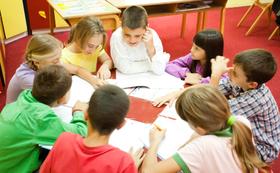Top Rankings
Sanilac Independent School District ranks among the top 20% of public school district in Michigan for:
Category
Attribute
Overall Rank
Highest overall rank (Top 10%)
Math Proficiency
Highest math proficiency (Top 20%)
Reading/Language Arts Proficiency
Highest reading/language arts proficiency (Top 1%)
Science Proficiency
Highest science proficiency (Top 20%)
Student Attention
Lowest student-teacher ratio (Top 1%)
For the 2025-26 school year, there is 1 public preschool serving 49 students in Sanilac Independent School District. This district's average pre testing ranking is 9/10, which is in the top 20% of public pre schools in Michigan.
Public Preschool in Sanilac Independent School District have an average math proficiency score of 49% (versus the Michigan public pre school average of 34%), and reading proficiency score of 80% (versus the 40% statewide average).
Minority enrollment is 8% of the student body (majority Black), which is less than the Michigan public preschool average of 39% (majority Black).
Overview
This School District
This State (MI)
# Schools
2 Schools
1,088 Schools
# Students
49 Students
372,117 Students
# Teachers
26 Teachers
24,806 Teachers
Student-Teacher Ratio
4:1
4:1
Student By Grade
District Rank
Sanilac Independent School District, which is ranked within the top 10% of all 845 school districts in Michigan (based off of combined math and reading proficiency testing data) for the 2022-2023 school year.
Overall District Rank
#48 out of 862 school districts
(Top 10%)
(Top 10%)
Math Test Scores (% Proficient)
50%
35%
Reading/Language Arts Test Scores (% Proficient)
≥80%
45%
Science Test Scores (% Proficient)
≥50%
38%
Graduation Rate
(19-20)<50%
86%
Students by Ethnicity:
Diversity Score
0.15
0.58
% American Indian
n/a
1%
% Asian
n/a
3%
% Hispanic
2%
9%
% Black
6%
21%
% White
92%
61%
% Hawaiian
n/a
n/a
% Two or more races
n/a
5%
All Ethnic Groups
District Revenue and Spending
Total Revenue
$13 MM
$25,476 MM
Spending
$12 MM
$24,351 MM
Revenue / Student
$221,825
$16,123
Spending / Student
$209,368
$15,270
Best Sanilac Independent School District Public Preschools (2025-26)
School
(Math and Reading Proficiency)
(Math and Reading Proficiency)
Location
Quick Facts
Rank: #11.
Sanilac Isd Special Education Services
Special Education School
(Math: 40-59% | Reading: ≥80%)
Rank:
Rank:
9/
Top 20%10
46 N Jackson St
Sandusky, MI 48471
(810) 648-2200
Sandusky, MI 48471
(810) 648-2200
Gr: PK-12 | 49 students Student-teacher ratio: 4:1 Minority enrollment: 8%
Recent Articles

School Vouchers: Updated Pros and Cons (2025 Review)
Comprehensive 2025 analysis of school vouchers, weighing benefits and challenges for families, funding, outcomes, and policy directions.

Benefits and Drawbacks of Homework in 2025
Explore updated 2025 insights on homework’s benefits, drawbacks, mental health impact, best practices, and policy trends in U.S. public schools.

Charter Schools vs Public Schools 2025: Key Differences & Trends
Explore updated 2025 insights comparing charter schools vs public schools, enrollment, academic outcomes, funding, and real-world examples for families and educators.





